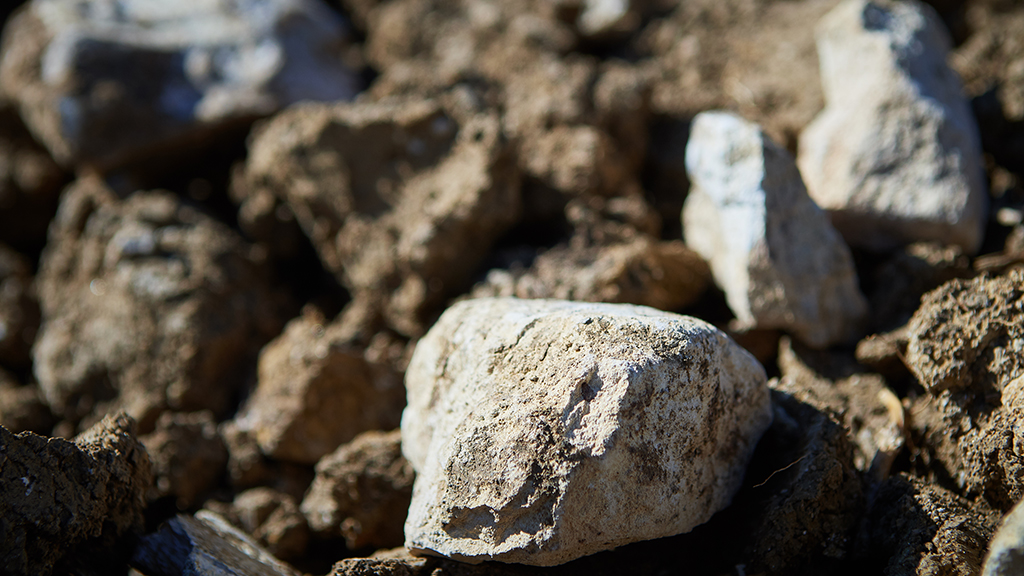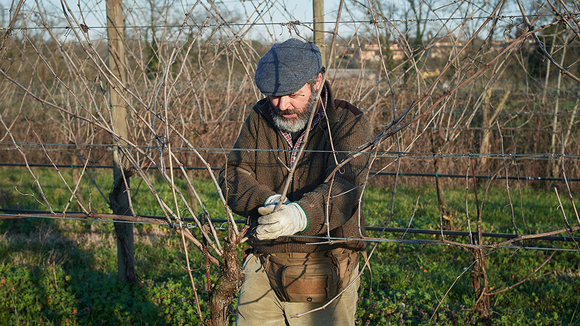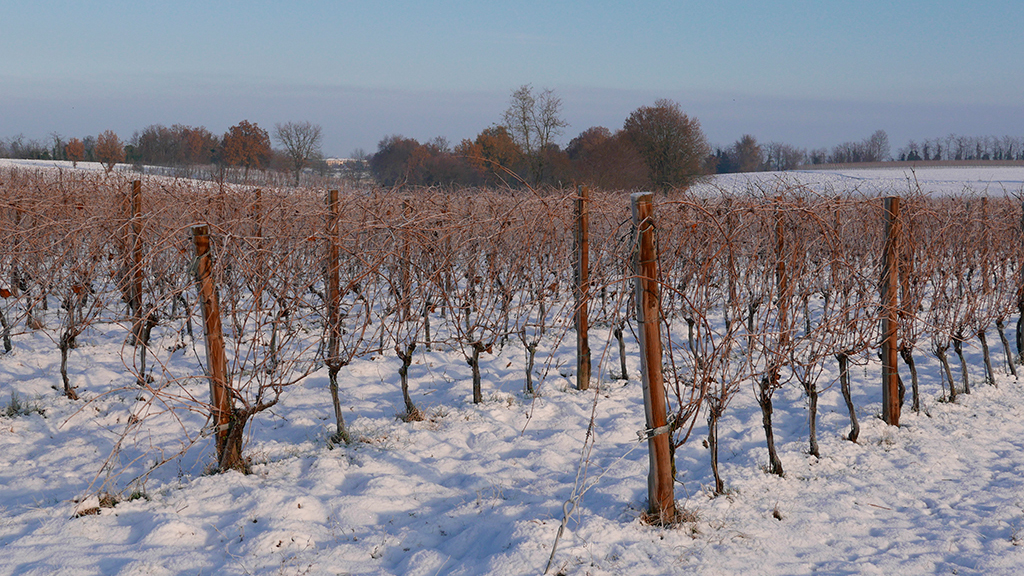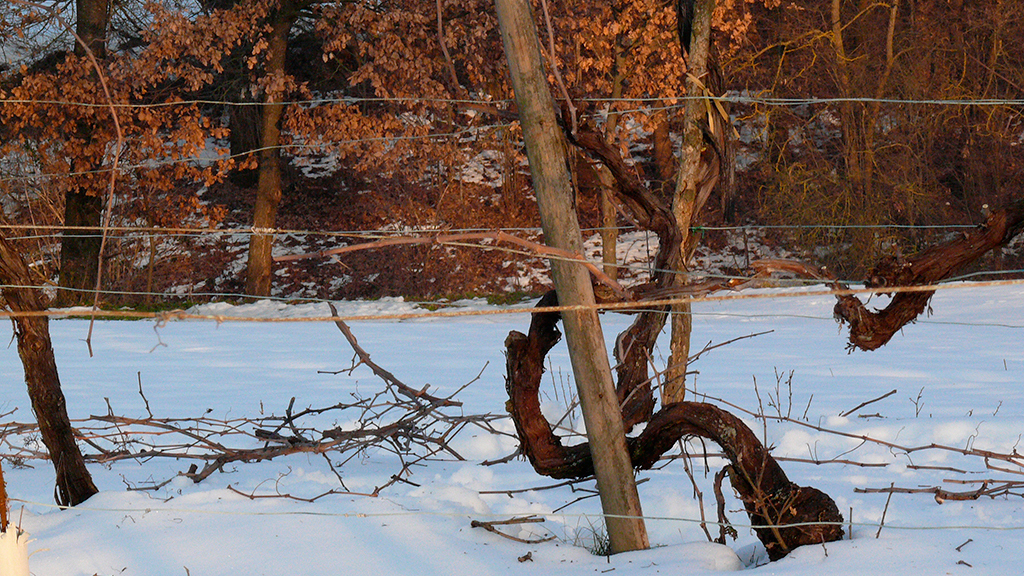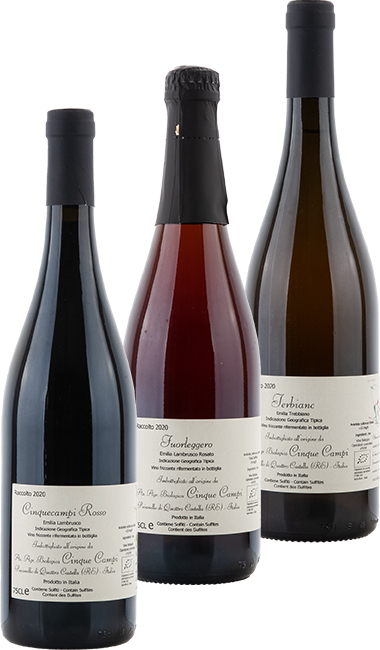LambruscoFor many people, this was for a long time a wine like Chianti from a raffia bottle or Soave in a litre bottle from the pizza parlour. It was one of those wines of the 1970s that, after a night of drinking and smoking, you would wake up at noon on a Sunday with a splitting headache. In the meantime, this wine has largely disappeared into oblivion, because about a decade ago, a few committed winegrowers tried to change the image of Lambrusco, which had been completely battered by large wineries. They were successful, and also because of the help of restaurateurs like Massimo Bottura, who was one of the first to put this special wine back on the menu in his award-winning Osteria Francescana. Lambrusco has become Lambrusco again ...
What actually is Lambrusco?
Lambrusco is the traditional wine of Emilia, the part of Emilia-Romagna that stretches from the capital Bologna to the northwest, towards Modena and Cremona, towards violin making and luxury sports cars, towards Aceto Balsamico, Parmigiano Reggiano or Prosciutto.
Lambrusco is a wine that is generally remembered as being residually sweet, but which is just as often vinified dry, but always with a certain mousseux.
It comes - and this is where the name comes from - from old, often ancient grape varieties based on wild vines, lambrusca in Italian. Lambrusco is therefore not a term for a grape variety, nor for a grape variety family, nor even for a real style; for the wines can be strongly or slightly mousse, secondary fermentation in the tank or in the bottle, dark red, rosé or white and sweet, semi-dry or dry. And yet, today the name is synonymous with moussé wines from Emilia and, to a small extent, also from Lombardy.
Country wine from the country
One of the leading protagonists of the Lambrusco revival was and is Vanni Nizzoli.
Vanni comes from a family of farmers who were always also grape growers and, as was so common in the past, practised mixed farming.
The farm is located in the idyllic Puianello di Quattro Castella, not far from the town of Reggio Emilia. It was 2003 when Vanni decided to put all his eggs in one basket and specialise entirely in the production of wines that take up ancient traditions and grape varieties. In the 1980s, his parents had already founded the winery with the name of the oldest vineyard. Cinque Campi titled and sold its first own bottlings to local restaurants and retailers, but Vanni wanted to start it all over again from scratch.
The decisive factor was that he had seven hectares of old vineyards with old clones and grape varieties that had never been treated with systemic sprays in his family.
So he started with the certification as an organic winery and from then on dealt with the traditional wine styles of Emilia. He quickly gained a reputation for producing one of the most charming and authentic Lambrusco in Emilia.
Cinque Campi - five fields
Vanni's vineyards are Cinque Campi and Le Marcone, which he took over from his parents, and Botteghe and La Bora Lungha, which he was able to acquire. They are all characterised by a mixture of sand, silt and clay with mostly high silica contents in different weights and in different orientations to the sun.
»The high silica content of the sandy parts gives the wine freshness and acidity, an almost skeletal character that I call the bones of the wine. The chalk subsoil complements that with some power and minerality«, Vanni describes the influence of his soils on the wine. There are the traditional varieties Malbo Gentile and Spergola as well as Lambrusco Grasparossa, but also Trebbiano dell'Emiglia, Marzemino, Cabernet Sauvignon, Muscat and Carmenère.
Minimum intervention
What begins in the vineyard with organic and partly biodynamic farming methods is consistently continued in the cellar.
If there is vin naturel anywhere in Emilia-Romagna, it is here.
He even started the second fermentation without additives and only with the help of a cooled must from his own grapes, whereby the amount added determines the final pressure in the bottle. With less must it becomes a frizzante, with more must a spumante.
The riddling and disgorging of the approximately 11,000 bottles produced annually at Cinque Campi is done by Vanni, his father and his son themselves.
Text and wine expertise: Christoph Raffelt


